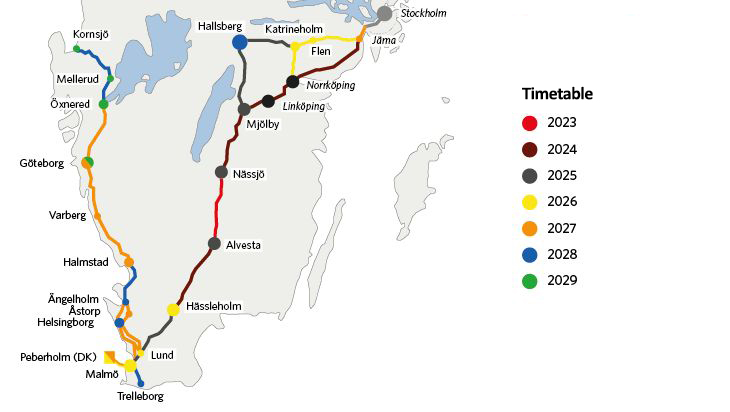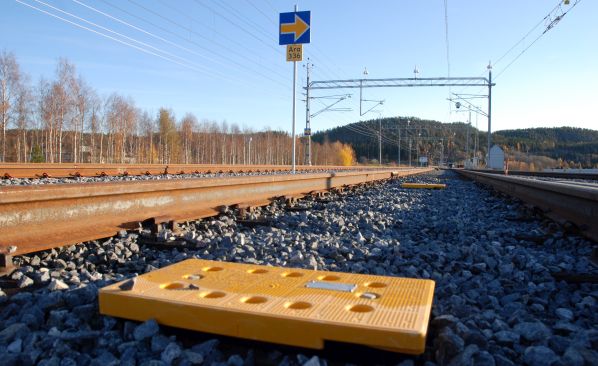The decision follows consultation with train operators and suppliers. “After a joint assessment and to enable the parties to phase out vehicles, buy new and convert existing vehicles, we have adapted the timetable in southern Sweden,” Trafikverket explains.
The delay affects the Stockholm - Hallsberg line, the main line from Stockholm via Katrineholm and Mjölby to Malmö and Denmark, and the line from Trelleborg via Helsingborg and Gothenburg to the Norwegian border at Kornsjö. While the start date for the work remains 2023, completion of the project will be delayed by two years to 2029.

Some major stations, such as Nässjö and Alvesta, are used by regional trains which cross the main lines. A later start will avoid having to equip these trains with ERTMS in advance. Danish infrastructure manager Banedanmark is adapting the area around Malmö and the Öresund link to Denmark and has moved forward the roll-out of ERTMS on its side of the Öresund strait. Trafikverket says this makes it difficult for it to complete work in the area.
Complexity
“Many new infrastructure projects will start or are already underway at stations affected by the ERTMS roll-out,” Trafikverket says. “An increasingly complex collaboration around larger stations means that the introduction there and at other critical hubs will take a few more years. For example, several large projects are in progress around Hallsberg. Work is underway on the Ostlänk, and therefore the dates for the introduction of ERTMS in Norrköping and Linköping have not yet been set. In the Stockholm area, there is a need for a cohesive programme, which is also proposed."
“ERTMS is a large and complex project that will continue for several years to come and we need to relate to what the reality actually looks like,” says Mr Patrik Assarsjö, who is responsible at Trafikverket for upgrading the rail network. “We are very pleased with the result of the meticulous work done with the adaptations. The new schedule gives the industry and us even better conditions for a smooth roll-out.”

